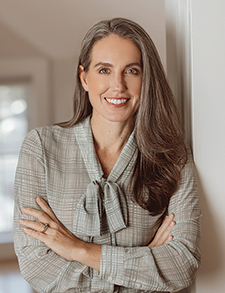 Anxiety is palpable across academic medical centers as we start 2025. Academic centers are not alone, as many medical centers were already facing multi-million-dollar operating gaps entering FY25, with resultant layoffs. According to Becker’s Hospital report in December 2024, 73 hospitals and healthcare systems reported job cuts (Becker’s Hospital Review. https://tinyurl.com/ycyszaj5).
Anxiety is palpable across academic medical centers as we start 2025. Academic centers are not alone, as many medical centers were already facing multi-million-dollar operating gaps entering FY25, with resultant layoffs. According to Becker’s Hospital report in December 2024, 73 hospitals and healthcare systems reported job cuts (Becker’s Hospital Review. https://tinyurl.com/ycyszaj5).
Explore This Issue
April 2025Healthcare, like many other fields, saw the “Great Resignation” in the 2021 post-COVID-19 era and then shifted in 2023 to what Gallup calls the “Great Detachment,” describing the phenomenon of employees staying in their jobs despite record low job satisfaction because of a cooling job market and inflation. These employees are less willing to participate in organizational change initiatives (Gallup. https://tinyurl.com/ykb9x26z) at a time when healthcare needs a fully engaged workforce to overcome the unprecedented challenges and uncertainty ahead.
The new administration took office on January 20, and two days later, multiple National Institutes of Health (NIH) study sections were canceled. On January 27, an order was issued to freeze all payments on federal grants and loans (Nature. https://tinyurl.com/5c6vdf63). The following week, the NIH issued guidance stating that the indirect cost recovery rate (IDC) will, effective immediately, be reduced to 15%. This news sent shockwaves across the country, as the stoppage of grant funding and severe cuts to IDC will impact hospital operations and further threaten the healthcare workforce and a generation of scientists and scientific discoveries. Additionally, NIH-funded research provides the foundation for the U.S. biomedical industry, which employs seven million individuals and contributes $69 billion to the U.S. economy annually.
The NIH supports researchers at 2,500 U.S. institutions (The Washington Post. https://tinyurl.com/4z9xa3wm). IDC covers a significant portion of the space, facilities, and administrative costs to enable research directly. Direct research funds, in addition to funding experimental costs, fund people. These funds cover the salaries of research assistants, grad students, post-docs, research staff, and faculty. These individuals, in large part, are not highly compensated but are people who have dedicated their lives to curing disease and improving human health.
Clinical revenue cannot fully bridge the research funding gap, as clinical medicine is facing its own funding challenges.
During these uncertain and anxiety-provoking times, it’s important to recognize the stress associated with this uncertainty. Leaders must support their team members by fostering open communication, providing clear direction, and showing empathy (Why Are We Here? https://tinyurl.com/4raemw4s). This is a time for listening to your colleagues and a time to act. It’s time to make policymakers aware of the profound negative impact the proposed policies and funding cuts will have, not only on biomedical research but also on the overall healthcare system, including desperate patients waiting for cures and treatments made possible through science.
While leaders have little control over the outside world, they have an astonishing influence on the work environment inside their organizations (Harvard Business Review. https://tinyurl.com/2p942ruc). It is a time to increase employee engagement by resetting expectations and priorities and connecting individuals to the mission and purpose (Gallup. https://tinyurl.com/ykb9x26z); it’s a time to focus on fundamentals and things that we can do that make a difference; and it’s a time to reflect on why we went into healthcare in the first place—to care for patients. What activities can we undertake during this uncertain funding period so that when clarity emerges, we are as prepared as possible for the next steps?
Leave a Reply